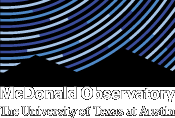Distance to the Cygnus Loop Comes Into Clearer Focus
The Cygnus Loop is the ethereal wreckage of a supernova explosion that occurred some 17,000-25,000 years ago. It is a cloud of dust and gas, called a nebula, steadily expanding outward from the original blast site. Because it is relatively close to us – and beautiful! - it is a popular target for amateur astronomers exploring the cosmos through backyard telescopes. Its neighborly status also makes it a popular target for professional astronomers studying the aftereffects of supernovae.

